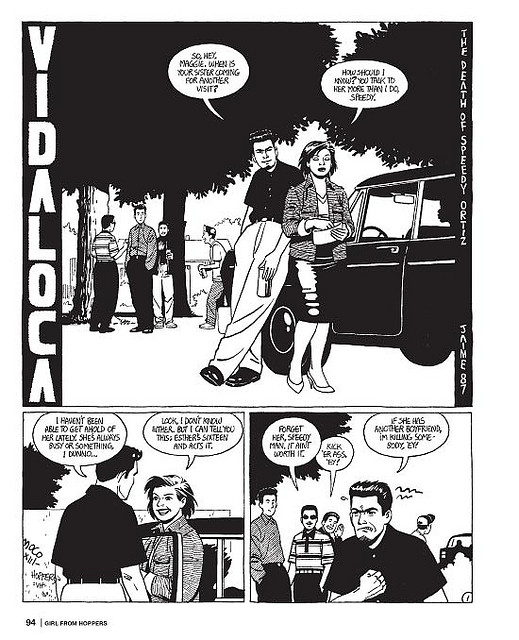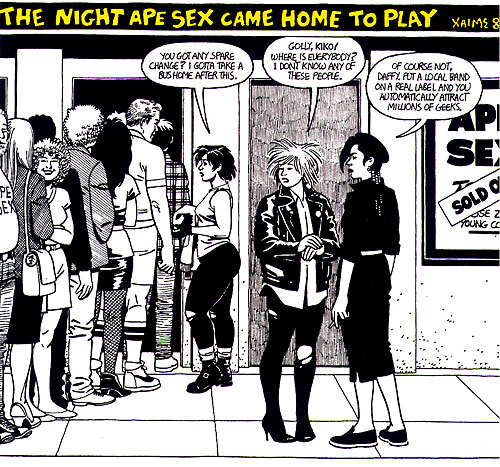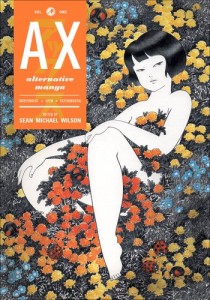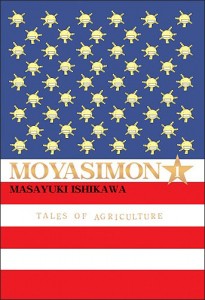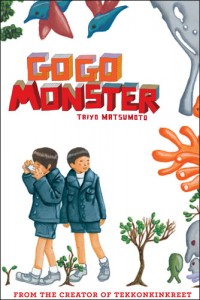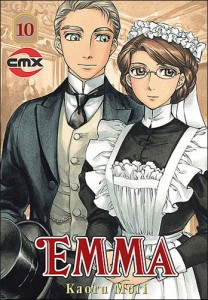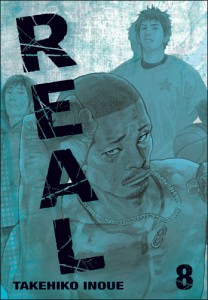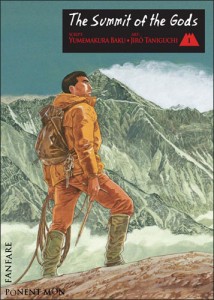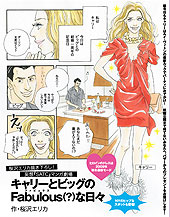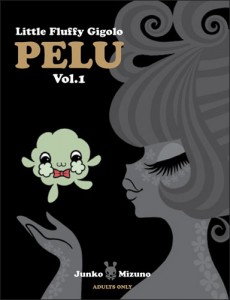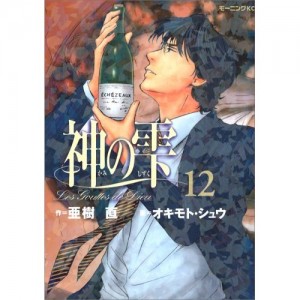As a comics creator and as a life-long comics reader, I’ve frequently been asked, who are your favorite artists, or which artists are your biggest influences? Time and again, Jaime Hernandez is in my top 10 list.
Given that most of my comics life revolves around manga nowadays, my response often surprises people. And it’s true — Jaime’s work isn’t what most people would consider manga at all, although his work is admired by fans and artists around the world for his draftsmanship, dramatic use of black/white, supple line work, and most of all, his storytelling skills. But discovering Love & Rockets when I was in college was a major turning point for me, and one that changed how and why I draw comics.
Just as being introduced to shojo manga in my tween years and later Elfquest in my early teens showed me stories that were made for me (and not just my brother) and that women could be comics creators, and just as the X-Men, Teen Titans, and Legion of Superheroes introduced me to the excitement of superhero stories, Jaime Hernandez’ work told me that I could and should draw comics about where I live, the things I did everyday, and the people I know and love.
Local Like Me/Punk Like Me
When I was going to high school and college in Honolulu, I had three separate lives: I was a “nice Japanee girl,” I hung out with ‘those punk rock kids,’ and I liked to read and draw comics. These three worlds rarely, if ever intersected.
I’m a third-generation Japanese-American, which means that my family has been in Hawaii since the early 1900’s. Japanese culture is a big part of my life, but being from Hawaii was just as important in shaping how I see the world.
Growing up and living as a ‘local’ in Hawaii is very different than what the Hawaii Visitors Bureau would have you believe. I can’t surf, I only know a handful of Hawaiian words, and dancing the hula? Please, don’t ask. But growing up in beautiful, easy-going, multi-cultural Hawaii was one of the best gifts my parents could have ever given to me.
Besides knowing where the best places to eat, drink, and surf, being ‘local’ means you know about local language/slang, and you grow up with a set of shared values, experiences, and sense of humor that you rarely see depicted realistically / non-stereotypically in movies, TV, and yes, comics too.
In the late 1980’s, I returned to Hawaii after a stint in art school on the mainland (a.k.a. New York City and San Francisco). My time away from Hawaii brought a lot of things into focus – or at least made me look at my hometown and the people who live in it in a new way. I realized that locals talked and acted differently than ‘mainland’ people. This was kind of cool / funny / interesting to observe; being a former insider who could now see this world through the lenses of an ‘outsider.’
At around the same time, I started hanging out with friends in the local punk / indie band scene. In dingy dive bars in industrial areas, high school auditoriums, garages, and in clubs tucked away in not-so-touristy pockets of Waikiki, you could hear punk, hardcore, speed metal, ska and hybrids of all of the above, played by bands like Devil Dog, S.R.O. (Something Really Offensive), The Wrong, B.Y.K. (Beat Your Kids), Mumbo Jumbo, Elvis 77, and Tantra Monsters.
There were parties at crash pads where the only furniture were milk crates, thrift store finds, and a mattress on the floor. There were nights hanging out in strip clubs with my guy friends, because that’s where their girlfriends worked. And there were lots of midnight beer runs to the 7-11’s and early, early mornings at 24-hour diners, eating breakfast while our ears were still ringing from the gig we just attended.
So when I read Jaime’s Locas stories in Love & Rockets, I immediately felt like I was looking into a world that was both familiar and new.
Reading Mi Vida Locas
While I was growing up, there weren’t a whole lot of Mexican-Americans living in Honolulu. Heck, you hardly hear Spanish being spoken, and frankly, now that I’ve been living in California for the past 10 years, the tacos in Hawaii were pretty lousy. But reading Love & Rockets gave me a glimpse into a world I would never be introduced to, much less become immersed in otherwise.
Before Love & Rockets, I had no idea that there were other types of ‘local’ cultures. I didn’t know what “mija’ or ‘vato’ meant. There are gangs in Hawaii, but I never experienced what it was like to be in the middle of the kind of turf wars that Jaime depicted in “The Death of Speedy.” The beautiful thing about Jaime’s Locas stories is that he did it without romanticizing Latino pride or preaching a heavy-handed ‘anti-violence’ or ‘anti-drugs’ message –- he just drew stories about his characters living their everyday (but nonetheless fascinating) lives.
Maggie was a character I could really relate to. She was Mexican-American, and spent time in both her Mexican and American worlds. She was curvy, and was alternately confidently sexy and insecure about her body. She was just as comfortable in a backyard party with her family and friends as she was at a dingy punk club. She was imperfect and complex.
I could also relate a lot to Ray, the guy from the ‘hood who left to see what the world had to offer. Ray came back and saw his childhood friends and ‘the way things are and the way they’ve always been’ in a different light, much as I did when I returned to Honolulu in the last 80’s after my mainland sojourn.
Unlike many comics I read at the time, Love & Rockets depicted a world that was filled with friends, family and acquaintances who were young and old, white, black, Latino, and Asian too.
I remember being particularly impressed to see Asian characters in Love & Rockets, like Daphne and Kiko. Finally! Asian characters who weren’t ninjas or samurai or dragon ladies or glorified boobs on a stick. Daffy and Kiko weren’t there to be the ‘token’ Asian characters or to add an ‘exotic’ touch to the story – they were just regular people like any other who lived in Maggie’s vibrant, multicultural Southern California world. They looked and acted like people I know, or wanted to know.
Perhaps best of all, the female characters in Love & Rockets are just as interesting (well, maybe more interesting) than the male characters. And sexy? Oh yes, they are that too, even without wearing skin-tight clothing or holding big guns. Chew on that, spandex-fetishists.
Draw What You Know
Before Love & Rockets, I drew the usual things that most young comics fans turned creators do: I drew stuff based on what I liked to read. I drew superhero comics. I drew stuff that looked like it was heavily influenced by shojo manga. I drew cutesy animals. I drew gag comics for my high school newspaper.
Jaime’s Love & Rockets stories showed me that comics can be a medium for telling very personal and engaging stories that aren’t just navel-gazing pity parties. His stories set in the lower-middle class suburbs and punk clubs of Southern California made me realize that I could draw stories about the real worlds I lived in instead of trying to tell stories about places that I would never, ever live in (like Titans Tower, or Xavier’s School for Gifted Children, or in my manga-obsessed mind, Neo-Tokyo or your generic Japanese high school where most shojo manga is set).
His diverse cast of characters showed me that there was a spectrum of human experiences and personalities that could be depicted in comics – and that I could draw stories based on people I knew, rather than people I’d never know, like Wolverine or Wonder Woman. He made comics real and relevant to me at a time when I was losing interest in superhero stories.
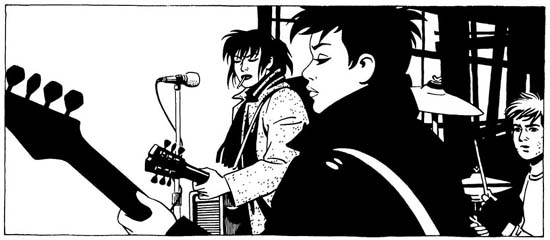 It’s been months since I’ve been to a club to see a live band. And it’s been over a year since I’ve been back to Hawaii. I still draw my Bento Box comic strip for the Honolulu Star-Advertiser (albeit only every few weeks, instead of weekly like I used to). I don’t quite have the passion or time to draw comics full time like I used to when I was in college.
It’s been months since I’ve been to a club to see a live band. And it’s been over a year since I’ve been back to Hawaii. I still draw my Bento Box comic strip for the Honolulu Star-Advertiser (albeit only every few weeks, instead of weekly like I used to). I don’t quite have the passion or time to draw comics full time like I used to when I was in college.
But I can still pick up Love & Rockets today, and it’s like catching up with dear friends who are growing old with me. It’s a comics series that continues to speak to me like no other, and one that I know I’ll enjoy until Jaime doesn’t feel like drawing it anymore (which I hope never, ever happens.)
I’m no where near as talented and prolific as Jaime Hernandez is, but I am grateful for the lessons that I learned from his comics many years ago: just draw what you know, and the rest will follow.
______________
Deb Aoki is the Manga Editor for About.com. She also draws Bento Box, a
semi-occasional comic strip for the Honolulu Star Advertiser.
The index to the Locas Roundtable is here.“>Locas Roundtable is here.

